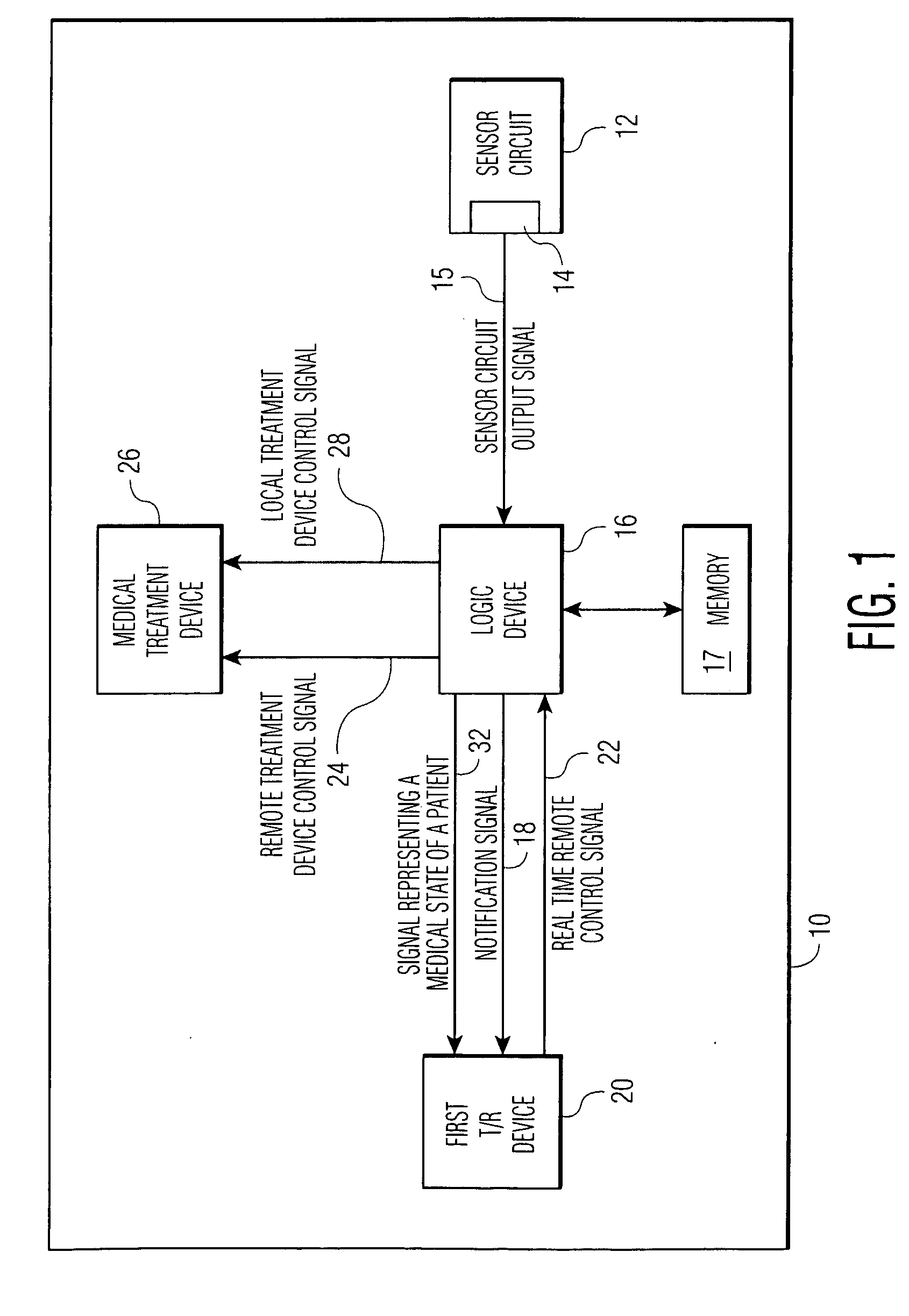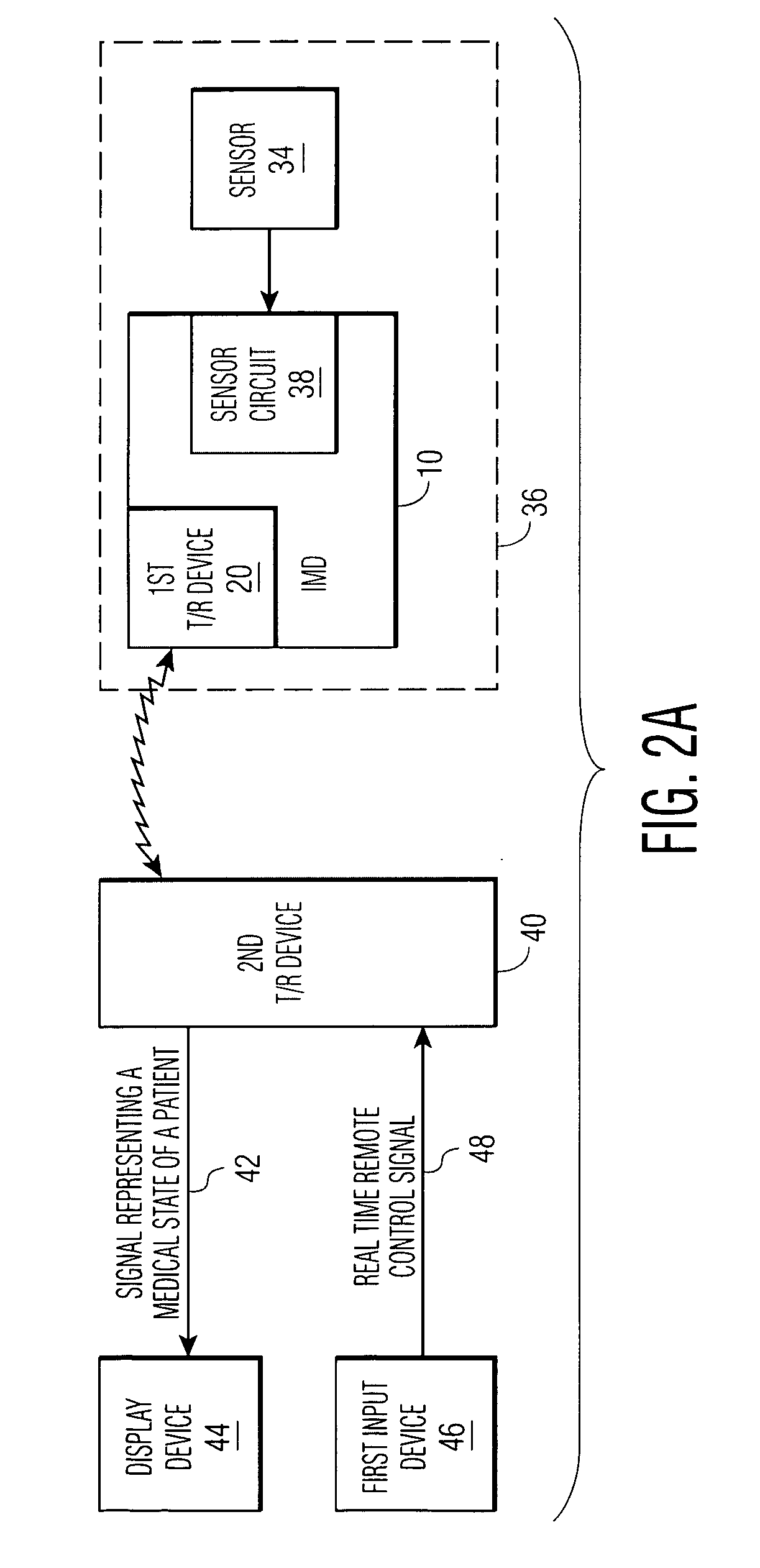Implantable medical device which may be controlled from central station
a central station and medical device technology, applied in electrotherapy, therapy, etc., can solve the problems of inability to accurately determine inability to fully understand all the possible programming complexities, and inability to fully understand the optimal value of some programmable parameters, so as to save battery power
- Summary
- Abstract
- Description
- Claims
- Application Information
AI Technical Summary
Benefits of technology
Problems solved by technology
Method used
Image
Examples
Embodiment Construction
[0030]FIG. 1 shows an implantable medical device 10 which has the capacity to notify a remotely located medical expert. Sensor circuit 12, with output 14, outputs sensor circuit output signals 15. The signals contain data regarding the measurement of at least one medical parameter, a parameter which allows the logic device 16 of the IMD to make treatment decisions. 15 may be an analog signal or a digitized one, as is known in the art. Means for amplification, of 15 and other techniques for signal management as are known in the art, may reside within 12. The sensor circuit is coupled to a sensor, as discussed hereinbelow.
[0031]Logic device 16 analyzes signals 15 to determine if there is a need for (a) treatment of a medical abnormality, and / or (b) notification of a remotely located medical expert. Scenarios are possible in which:
1) the abnormality which calls for notification is the same as that which call for treatment;
2) the abnormality which calls for notification is less severe t...
PUM
 Login to View More
Login to View More Abstract
Description
Claims
Application Information
 Login to View More
Login to View More - R&D
- Intellectual Property
- Life Sciences
- Materials
- Tech Scout
- Unparalleled Data Quality
- Higher Quality Content
- 60% Fewer Hallucinations
Browse by: Latest US Patents, China's latest patents, Technical Efficacy Thesaurus, Application Domain, Technology Topic, Popular Technical Reports.
© 2025 PatSnap. All rights reserved.Legal|Privacy policy|Modern Slavery Act Transparency Statement|Sitemap|About US| Contact US: help@patsnap.com



